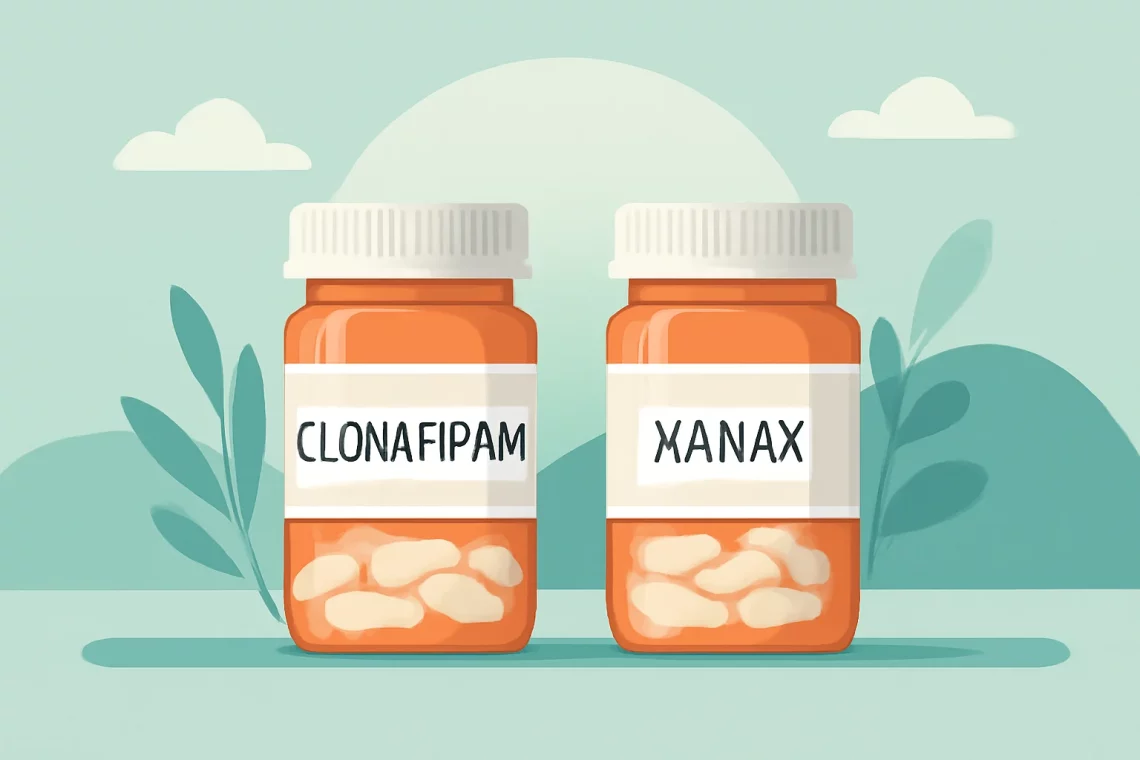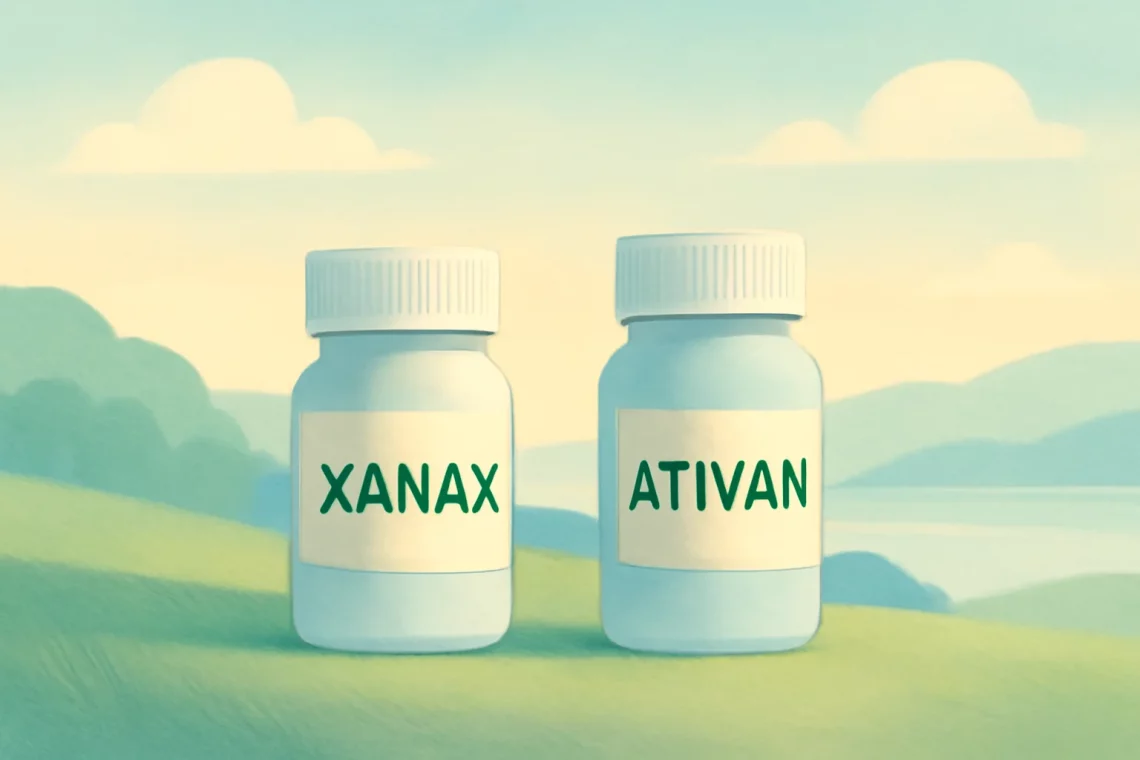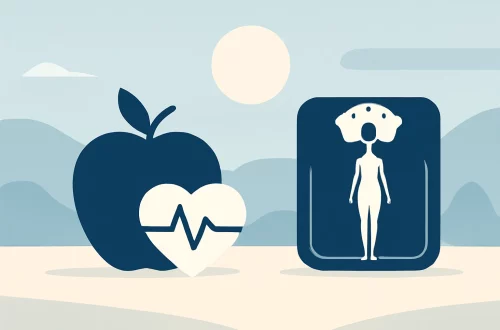-
Clonazepam vs Xanax: Key Differences and Similarities Explained
Clonazepam and Xanax are two medications that fall under the category of benzodiazepines, a class of drugs that are commonly prescribed for anxiety, panic disorders, and certain seizure disorders. Both medications work by enhancing the effects of a neurotransmitter in the brain known as gamma-aminobutyric acid (GABA), which helps to calm the nervous system and reduce excessive neuronal activity. Given their similar mechanisms of action, one might assume that they are interchangeable; however, there are distinct differences in their uses, onset of action, duration, and potential side effects that can significantly impact patient care and treatment outcomes. As mental health awareness continues to grow, the discussion surrounding these medications has…
-
Xanax vs Buspirone: Understanding the Differences and Uses
Xanax and Buspirone are two medications commonly prescribed for the treatment of anxiety and related disorders. While both drugs aim to alleviate symptoms of anxiety, they function through different mechanisms and are used in varying clinical scenarios. Understanding these differences is crucial for individuals seeking effective treatment options for their anxiety. Xanax, known generically as alprazolam, is a benzodiazepine that works by enhancing the effects of a neurotransmitter called gamma-aminobutyric acid (GABA) in the brain, leading to a calming effect. On the other hand, Buspirone is an anxiolytic that operates through a different pathway, primarily affecting serotonin and dopamine receptors. The choice between Xanax and Buspirone can often confuse patients…
-
Xanax vs Ativan: Understanding the Differences and Uses
Xanax and Ativan are both medications commonly prescribed to manage anxiety and other related disorders. They belong to a class of drugs known as benzodiazepines, which are often utilized for their sedative and calming effects. While they may serve similar purposes, these medications differ in their chemical composition, usage, and side effects. Understanding the distinctions between Xanax and Ativan is crucial for patients and healthcare providers alike, as it can impact treatment decisions and overall patient outcomes. As anxiety disorders continue to affect a significant portion of the population, the choice between these two medications can be a pivotal one. In this article, we will explore the fundamental differences and…
-
Xanax vs Restoril Understanding Their Uses and Differences
The increasing prevalence of anxiety and sleep disorders has led many individuals to seek pharmacological solutions. Two medications that often come up in discussions about treatment options for these conditions are Xanax and Restoril. Both drugs serve different purposes and have distinct profiles, yet they are frequently compared due to their sedative effects and potential for dependence. Understanding the differences, benefits, and risks associated with each can empower individuals to make informed decisions about their treatment options. Xanax, generically known as alprazolam, belongs to the benzodiazepine class of medications. It is primarily prescribed for anxiety disorders and panic attacks, acting quickly to alleviate symptoms. On the other hand, Restoril, or…
-
Ativan vs Librium: Understanding Their Differences and Uses
Ativan and Librium are two medications that belong to the benzodiazepine class, commonly prescribed for anxiety-related disorders. While both drugs are effective in treating anxiety, they have different profiles in terms of their chemical structure, duration of action, and specific uses. Understanding the nuances between Ativan (lorazepam) and Librium (chlordiazepoxide) can help patients and healthcare providers make informed decisions about treatment options. This discussion is particularly relevant as anxiety disorders have become increasingly prevalent in today’s fast-paced society. As individuals seek relief from their symptoms, it is essential to understand how these medications work, their potential side effects, and the circumstances under which they are prescribed. Choosing the right medication…
-
Xanax vs Vistaril: Understanding Their Uses and Differences
Anxiety and panic disorders have become increasingly common in today’s fast-paced world, leading many individuals to seek relief through medication. Among the various treatments available, Xanax and Vistaril are two medications frequently discussed in the context of anxiety management. Both have unique properties and mechanisms of action, making them suitable for different patient needs and circumstances. Xanax, a well-known benzodiazepine, is primarily prescribed for the treatment of anxiety disorders and panic attacks. It works by enhancing the effects of a neurotransmitter called gamma-aminobutyric acid (GABA), which helps to calm excessive brain activity. On the other hand, Vistaril, an antihistamine with anxiolytic properties, is often used not only for anxiety but…
-
Clonazepam vs Diazepam: Which Medication is Right for You?
Clonazepam and diazepam are two medications that fall under the category of benzodiazepines, a class of drugs commonly prescribed for their sedative, anxiolytic, and muscle-relaxant properties. These medications have been widely used in the treatment of various conditions, including anxiety disorders, panic attacks, and seizures. Despite their similarities, clonazepam and diazepam have distinct differences in their pharmacological profiles, indications, and side effects, which can influence the choice of one over the other in clinical practice. Understanding these differences is essential for patients and healthcare professionals alike, as it can guide effective treatment strategies tailored to individual needs. Both medications work by enhancing the effects of a neurotransmitter called gamma-aminobutyric acid…
-
Xanax vs Valium: Understanding the Differences and Uses
The use of benzodiazepines has become increasingly prevalent in modern medicine, particularly for the treatment of anxiety and panic disorders. Two of the most commonly prescribed medications in this category are Xanax and Valium. Both of these drugs are known for their effectiveness in alleviating symptoms of anxiety, but they possess unique properties that set them apart. As the understanding of mental health continues to evolve, it is essential to examine these medications closely to determine which may be more appropriate for various conditions. In the realm of mental health treatment, the importance of medication cannot be overstated. Patients often seek relief from overwhelming feelings of anxiety, panic, or stress,…
-
Xanax vs Hydroxyzine: Key Differences and Uses Explained
Xanax and hydroxyzine are two medications that are often prescribed for anxiety and related conditions. While both are effective in managing symptoms, they operate through different mechanisms and have distinct profiles. Xanax, which belongs to the benzodiazepine class of drugs, is commonly used for the short-term relief of anxiety and panic disorders. Its fast-acting nature and potential for dependence make it a medication that requires careful monitoring. On the other hand, hydroxyzine is an antihistamine that is often used as a sedative to treat anxiety and tension. Unlike Xanax, hydroxyzine is not classified as a controlled substance, making it a safer option for some patients. It’s important to understand the…
-
Xanax vs Klonopin: Understanding the Differences and Uses
Xanax and Klonopin are both medications that belong to a class known as benzodiazepines, widely prescribed for the management of anxiety disorders and certain other mental health conditions. The increasing prevalence of anxiety-related issues in today’s fast-paced world has led to a greater reliance on these medications. While both Xanax and Klonopin are effective in alleviating anxiety symptoms, they differ in their chemical composition, duration of action, and specific uses. Understanding these differences is crucial for patients and healthcare providers alike, as it can significantly influence treatment decisions and outcomes. Benzodiazepines work by enhancing the effects of a neurotransmitter called gamma-aminobutyric acid (GABA) in the brain, which leads to calming…







































